Kyoto
2025.08.31
[Kyoto] Discover the Exquisite Craftsmanship of Japanese Kitchen Knives at Musashi Japan and Seisuke Knife

Kyoto has long been Japan’s cultural heart and continues to attract skilled craftspeople dedicated to refining their art. Although the city isn’t traditionally known for knife production, it’s home to numerous workshops and a growing number of stores that create and supply innovative Japanese knives—modern in function yet rooted in traditional techniques.
In this article, we delve into the unique world of Japanese knives in Kyoto, explain how to choose the right blade, and introduce two of the best places to buy one: Musashi Japan and Seisuke Knife.
Table of Contents
Pro Tips: Types of Japanese Knives and How to Choose the Right One
 Japan has a rich history of knife making, and Japanese knives are among the finest in the world. Closely tied to the tradition of Japanese swordsmithing, these blades are prized by chefs worldwide for their exceptional sharpness, durability, and aesthetic beauty.
Japan has a rich history of knife making, and Japanese knives are among the finest in the world. Closely tied to the tradition of Japanese swordsmithing, these blades are prized by chefs worldwide for their exceptional sharpness, durability, and aesthetic beauty. When it comes to buying a Japanese knife, the wide variety of types, sizes, and styles can make it hard to know where to begin. However, keeping a few key points in mind can help you choose the right Japanese knife. First, consider what you’ll be using the knife for, as this will determine the most suitable type. Here are some popular options:
When it comes to buying a Japanese knife, the wide variety of types, sizes, and styles can make it hard to know where to begin. However, keeping a few key points in mind can help you choose the right Japanese knife. First, consider what you’ll be using the knife for, as this will determine the most suitable type. Here are some popular options:1. Santoku: Versatile “three virtues” knife for meat, fish, and vegetables—an excellent all‑rounder for various kitchen tasks.
2. Gyuto: Japanese chef’s knife with a curved blade—great for slicing, dicing, and mincing.
3. Nakiri: Specializes in chopping vegetables with straight up‑and‑down cuts.
4. Petty: Small utility/paring knife for fruit and delicate tasks.
5. Yanagiba: Long, narrow blade designed for slicing and filleting fish.
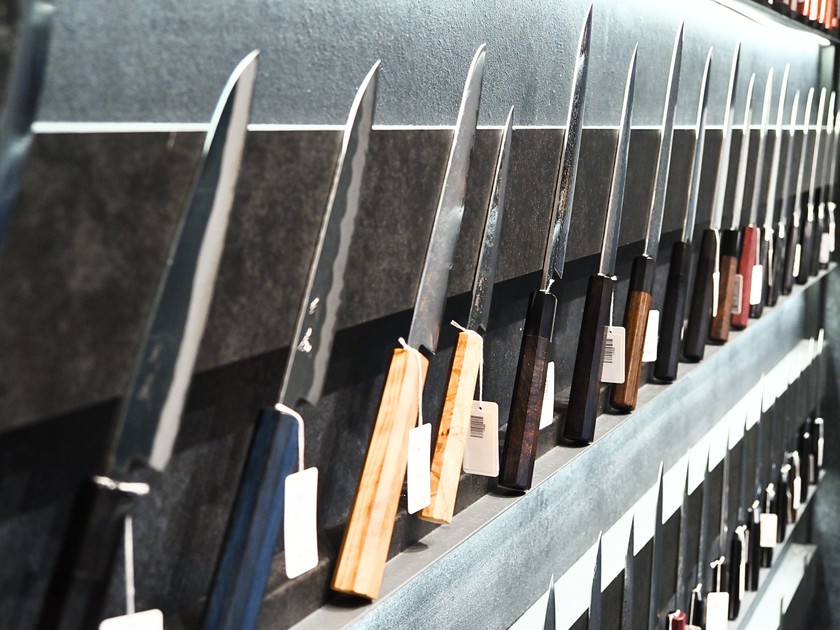 Once you’ve decided on the type of knife that best suits your needs, there are several other important factors to consider:
Once you’ve decided on the type of knife that best suits your needs, there are several other important factors to consider:1. Materials: Japanese knives are made from various types of steel. Stainless steel requires less maintenance but may lose its edge faster; high-carbon steel takes a keener edge but can rust easily.
2. Blade shape: Single-edged knives are designed for precision and usually take time to master; double-edged blades are generally easier to use.
3. Length, weight, and handle design should match your hand and cutting style.
4. Budget: Handmade mid-level Japanese knives typically cost between ¥20,000 and ¥40,000.
Musashi Japan, One of Japan’s Top Knife Brands
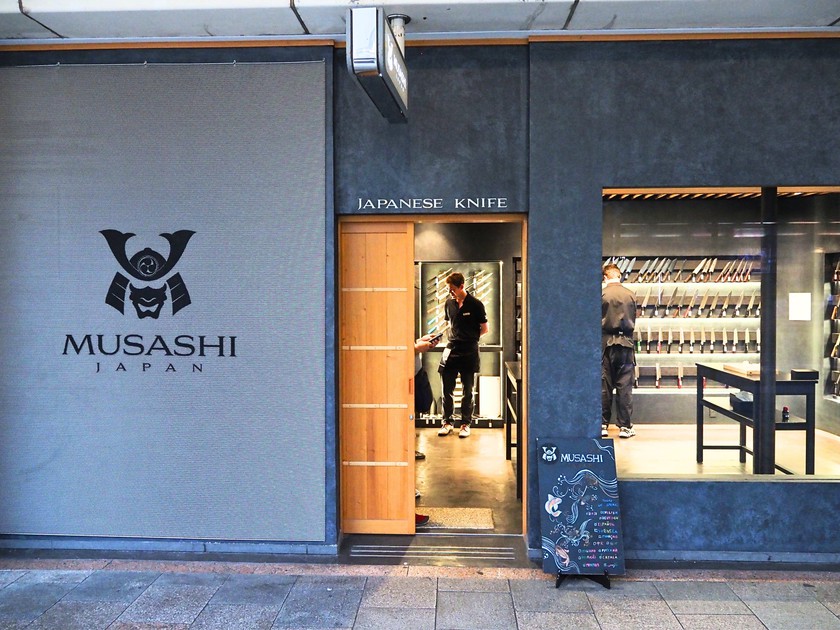 Named after the legendary Japanese swordsman Miyamoto Musashi, Musashi Japan offers a wide selection of kitchen knives to suit every need. All knives under the Musashi brand are handcrafted or hand‑forged by top Japanese knifemakers, carefully chosen for practicality, longevity, and visual appeal.
Named after the legendary Japanese swordsman Miyamoto Musashi, Musashi Japan offers a wide selection of kitchen knives to suit every need. All knives under the Musashi brand are handcrafted or hand‑forged by top Japanese knifemakers, carefully chosen for practicality, longevity, and visual appeal.Musashi Japan collaborates with master craftsmen from seven Japanese prefectures, each specializing in vital aspects of knife-making, including engraving, forging, sharpening, polishing, and handle-making. These artisans, some with over 50 years of experience, uphold diverse regional traditions—such as chōkin (metal engraving) and Gin-San (silver-3 steel) forging. Several, like Yamawaki and Kurotori, handles every step of the production process, ensuring quality and authenticity.
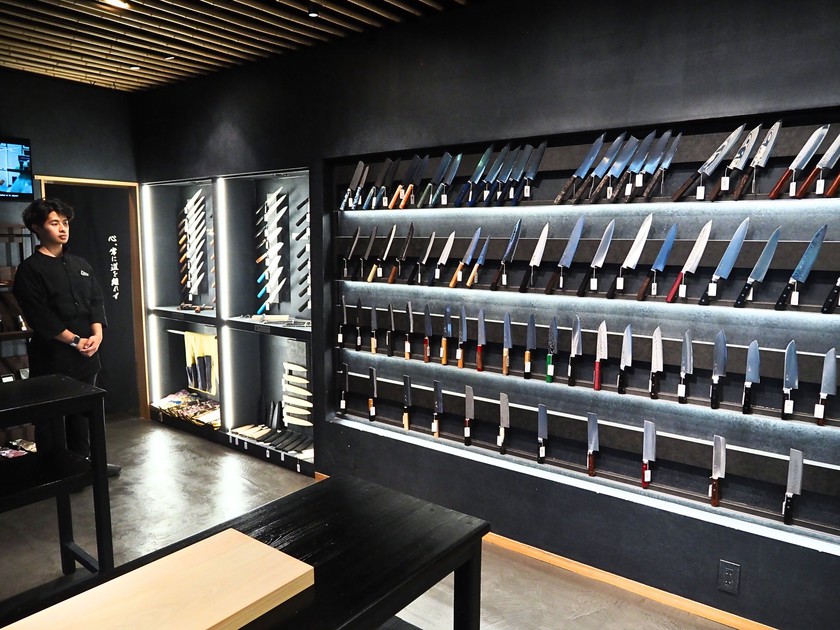 Musashi Japan has stores in Sanjo, Kawaramachi, and Shijo areas in Kyoto, as well as Asakusa and Kappabashi in Tokyo, Sanjo in Nara, and Tsushima in Nagasaki. The company also plans to continue expanding to even more locations across Japan in the future.
Musashi Japan has stores in Sanjo, Kawaramachi, and Shijo areas in Kyoto, as well as Asakusa and Kappabashi in Tokyo, Sanjo in Nara, and Tsushima in Nagasaki. The company also plans to continue expanding to even more locations across Japan in the future.Located on the bustling Shijo Street, Musashi Japan Kyoto Shijo is a stylishly modern store distinguished by its black‑and‑bamboo‑accented interior. The shop features an extensive selection of knives, beautifully displayed and available for customers to try out. Knowledgeable, multilingual staff are on hand to give advice and answer any questions, whether you’re choosing a knife, arranging packing and shipping, or seeking tips on aftercare. You’ll also find quality accessories, including whetstones for sharpening, wooden sheaths, and traditional fabric knife rolls for secure and elegant transport.
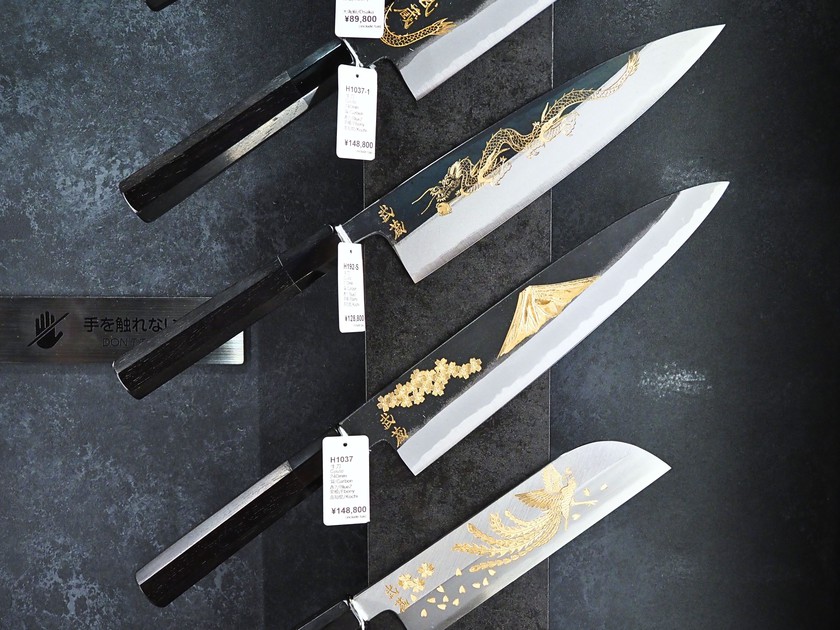
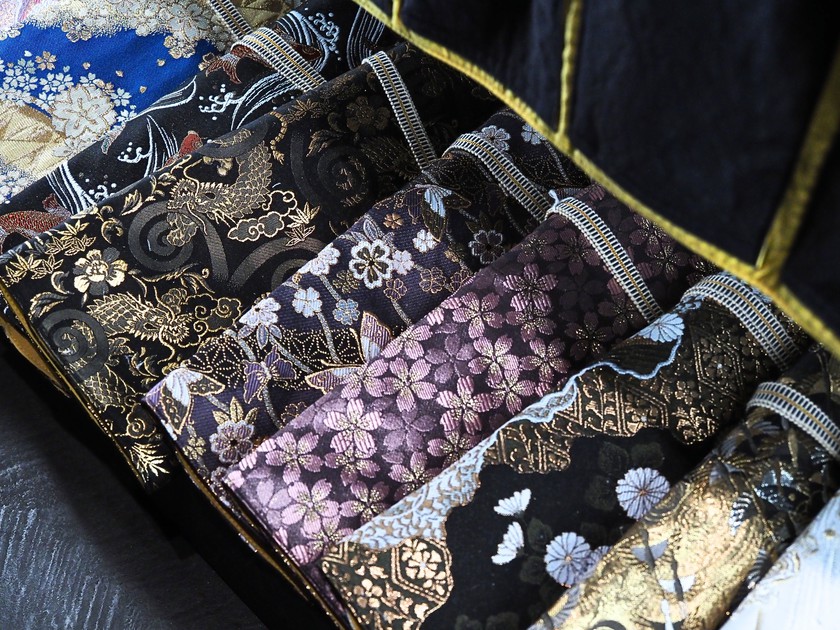 Musashi Japan Kyoto Shijo Store
Musashi Japan Kyoto Shijo StoreAddress: Sarasa Hanayukoji, Otabi-miyamotocho, Teramachi Higashiiru, Shijo-dori, Shimogyo-ku, Kyoto
Hours: 11:00 am – 9:00 pm
Closed: Open year-round
Website: https://www.musashihamono.com/
Instagram: https://www.instagram.com/musashijapan/
Seisuke Knife, Kyoto’s Leading Specialty Knife Store
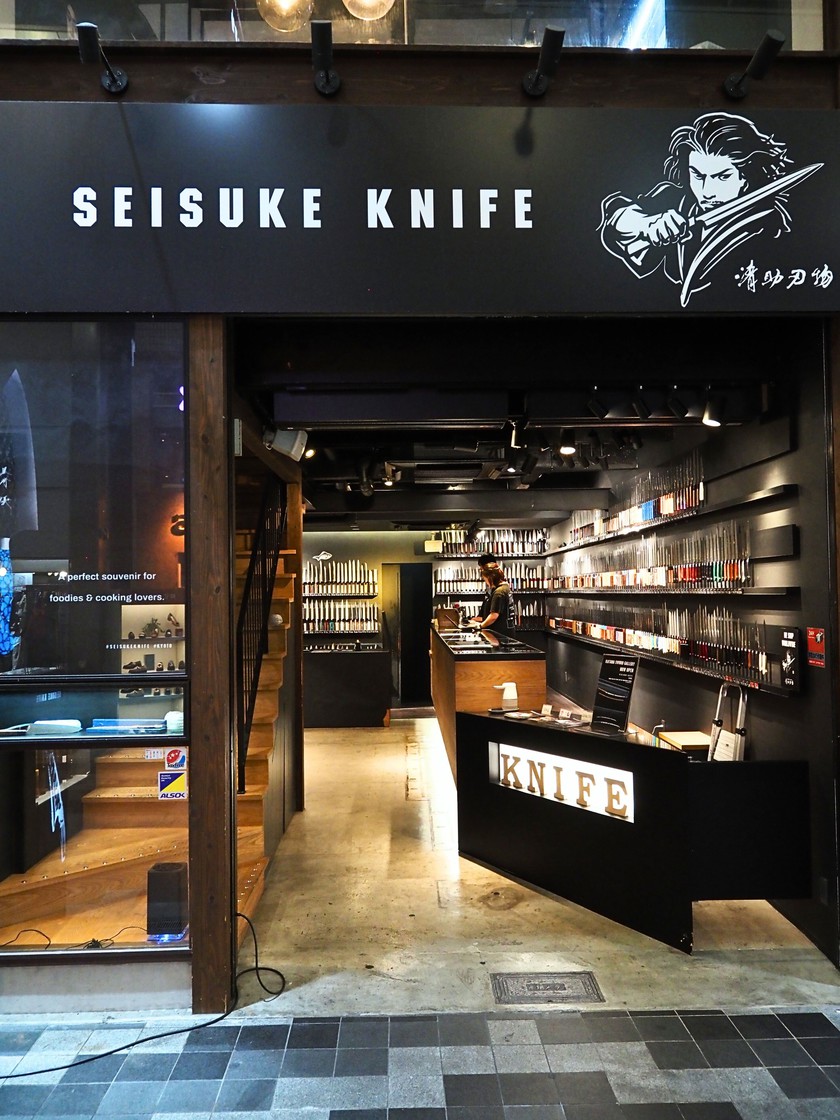 Seisuke Knife is another of Japan’s leading knife specialty stores, known for its original brand and diverse collaborations with master artisans nationwide. The brand works directly with renowned Japanese blacksmiths and brands such as Yu Kurosaki, Hideo Kitaoka, and many others to offer a wide range of blade designs representing various regions.
Seisuke Knife is another of Japan’s leading knife specialty stores, known for its original brand and diverse collaborations with master artisans nationwide. The brand works directly with renowned Japanese blacksmiths and brands such as Yu Kurosaki, Hideo Kitaoka, and many others to offer a wide range of blade designs representing various regions.Seisuke Knife has one store in Kyoto and three in Tokyo, including their well-known shop in Kappabashi, making it a great choice to shop for your first Japanese knife during your stay. Tucked inside the covered Teramachi Kyogoku Shotengai shopping arcade in Kyoto, the Teramachi branch showcases an impressive display behind the counter and boasts an enormous range of handmade knives from various brands and artisans across Japan.
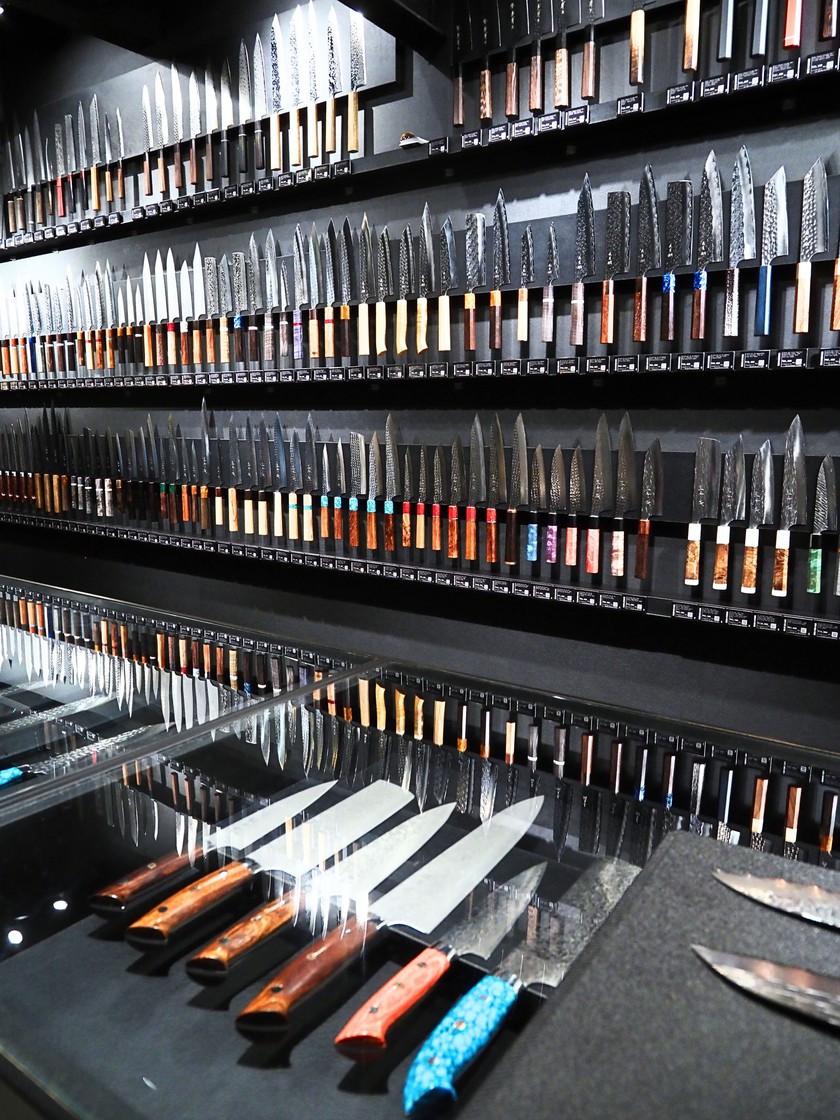 With such a large selection, it’s easy for visitors to compare knives. Friendly, English‑speaking staff will assist with selection, purchase, and aftercare. The store also stocks whetstones, wooden cutting boards, and traditional wasabi graters. Japanese history fans will enjoy the second floor, which features an impressive collection of antique Japanese swords.
With such a large selection, it’s easy for visitors to compare knives. Friendly, English‑speaking staff will assist with selection, purchase, and aftercare. The store also stocks whetstones, wooden cutting boards, and traditional wasabi graters. Japanese history fans will enjoy the second floor, which features an impressive collection of antique Japanese swords.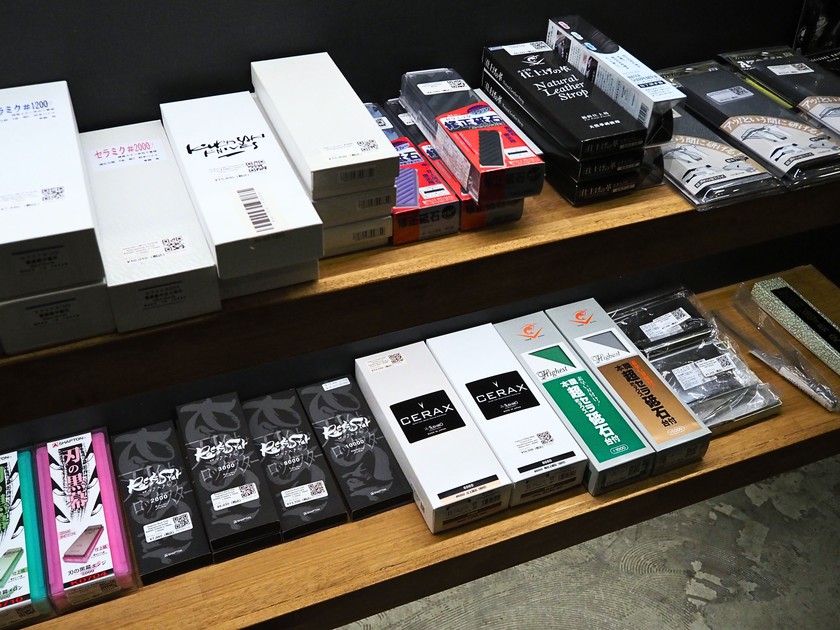
Address: 1-20-12, Nakagyo-ku, Nakanocho 552, Kyoto
Hours: 10:30 am – 6:30 pm
Closed: Open year-round
Website: https://seisukeknifekappabashi.com/
Instagram: https://www.instagram.com/seisukeknife/
How to get to Musashi Japan and Seisuke Knife from HOTEL TAVINOS Kyoto
● [On foot] Both stores are within walking distance of HOTEL TAVINOS Kyoto—simply walk about 15 minutes north to Shijo-dori Street. The stores are located very close to each other; Musashi Japan is on Sanjo-dori, while Seisuke Knife is just off Sanjo-dori, a short walk up Teramachi Kyogoku Shotengai shopping arcade.● [By bus] Take a Kyoto City Bus (Routes 5 or 7) from Kawaramachi Gojo bus stop, conveniently located right next to our hotel. Ride for about 9 minutes and get off at Shijo Kawaramachi bus stop. Both stores are just a short walk to the west from there.
